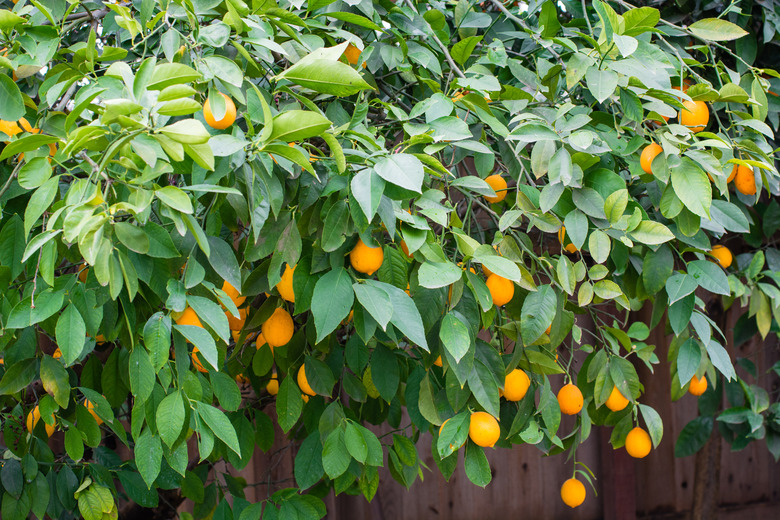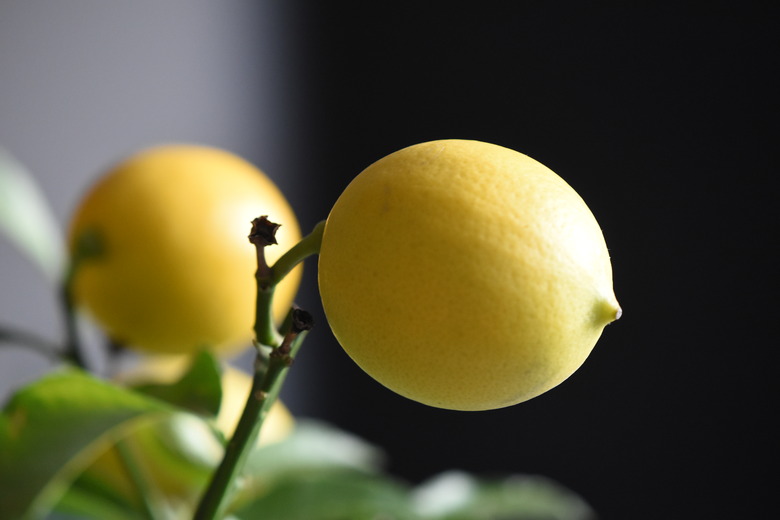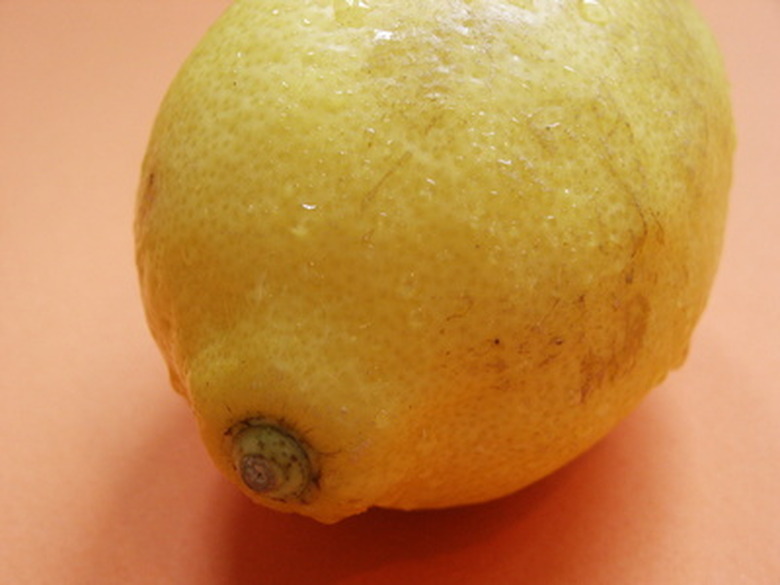Meyer Lemon Vs. Eureka Lemon: What's The Difference?
A rose by any other name might smell as sweet, but a lemon by any other name will not taste as sweet. There is a huge difference between the Meyer lemon (Citrus x limon 'Meyer,' USDA zones 8-11) and the Eureka lemon (Citrus x limon 'Eureka,' zones 9-11), in both appearance and taste. So it's a good idea to make your choice if you are planning on growing them in your garden or planning a special lemon-flavored treat for dinner.
Meyer Lemon Vs. Eureka Lemon
| Attributes | Meyer Lemon | Eureka Lemon |
| USDA Hardiness Zones | 8-11 | 9-11 |
| Tree Height | 6'-12' | 10'-12' |
| Rind Color | Bright Yellow to Light Orange | Pale Yellow |
| Flesh Color | Orange-Yellow | Greenish-Yellow |
| Taste | Less acidic, mild | More acidic, tart |
| Harvest | Spring-Summer | Fall-Winter |
Meyer Lemon Vs Eureka Lemon
Although both are considered lemons, only the Eureka is a "true lemon" because it's a type of Citrus limon that was developed in California in 1958. The Meyer lemon is a hybrid, whose origin is unknown. The North Carolina State Extension reports that it's believed to be a cross between a true lemon (citron) and a mandarin-pomelo hybrid. It was discovered growing as an ornamental plant in a dooryard in China in 1908.
Meyer and Eureka Lemon Trees
Meyer lemon trees grow about 6 to 12 feet tall and tend to be compact. The Eureka lemon height is about 10 to 12 feet tall, and trees are more wide-spreading the Meyers. Meyers require about half the space of Eurekas — about 8 to 10 feet — which is a consideration if you have a small yard and are considering whether to plant a Meyer or Eureka lemon tree.
The Meyer lemon tree is more open and has very few twigs and branches, which makes its fruit more susceptible to blemish, sunburn and frost damage because they are not protected by a leaf canopy. Both trees are evergreens with glossy, textured leaves. They also tend to be less thorny than other varieties of lemon trees, making the fruit easier to pick.
Meyer and Eureka Lemons: Outside
Meyer lemons are medium-sized and may be egg-shaped or more rounded than Eureka lemons. The nipple, or the end of the lemon that peaks outward, is usually rounded with a short or absent "nipple." In contrast, Eureka lemons have a more pronounced nipple. Meyers are bright yellow to light-orange in color, while Eurekas are pale yellow.
Meyer and Eureka Lemons: Inside
The pulp of a Meyer lemon is usually pale orange-yellow while the pulp of a Eureka lemon is greenish-yellow. The University of California Riverside notes that a sport of the standard Eureka lemon, sometimes sold as 'Pink Lemonade,' has pink flesh inside a striped green-and-cream rind, and it grows on trees with variegated leaves.
Meyer Vs. Eureka Lemon Taste
Meyers and Eurekas have 10 segments and are juicy. Meyer lemons taste sweeter, have a medium lemon favor and are less acidic. The Eureka lemon taste is more acidic and tart. Eureka lemons usually have fewer seeds while Meyer lemons have smaller seeds.
Meyer and Eureka Harvest Periods
Meyer produces fragrant white flowers with a pinkish hue year round, with the main harvesting period being between December to April. Eureka flowers are white to near white and are produced mid-spring, with the main harvesting period occurring during the late winter to early spring, although the harvesting period lengthens as the tree ages.
Meyer and Eureka Growing Conditions
Eureka lemon tree care includes growing them on acidic soil with a pH 4.5 or below, while Meyer lemon trees prefer a soil that is more neutral between 6.1 and 7.8. Both prefer full sun, but Meyers will tolerate partial shade. Both have average water needs and require regular watering, but not over-watering.
Meyer and Eureka Hardiness
Meyer lemons are the most cold-hardy of all lemons, to USDA zone 8. Eureka lemons are hardy to Zone 9. Meyers are very popular in Texas, California, Florida and Australia. Eureka lemons are also popular in California, where they originated, and Florida as well as in Israel, Argentina, Australia and South Africa.


